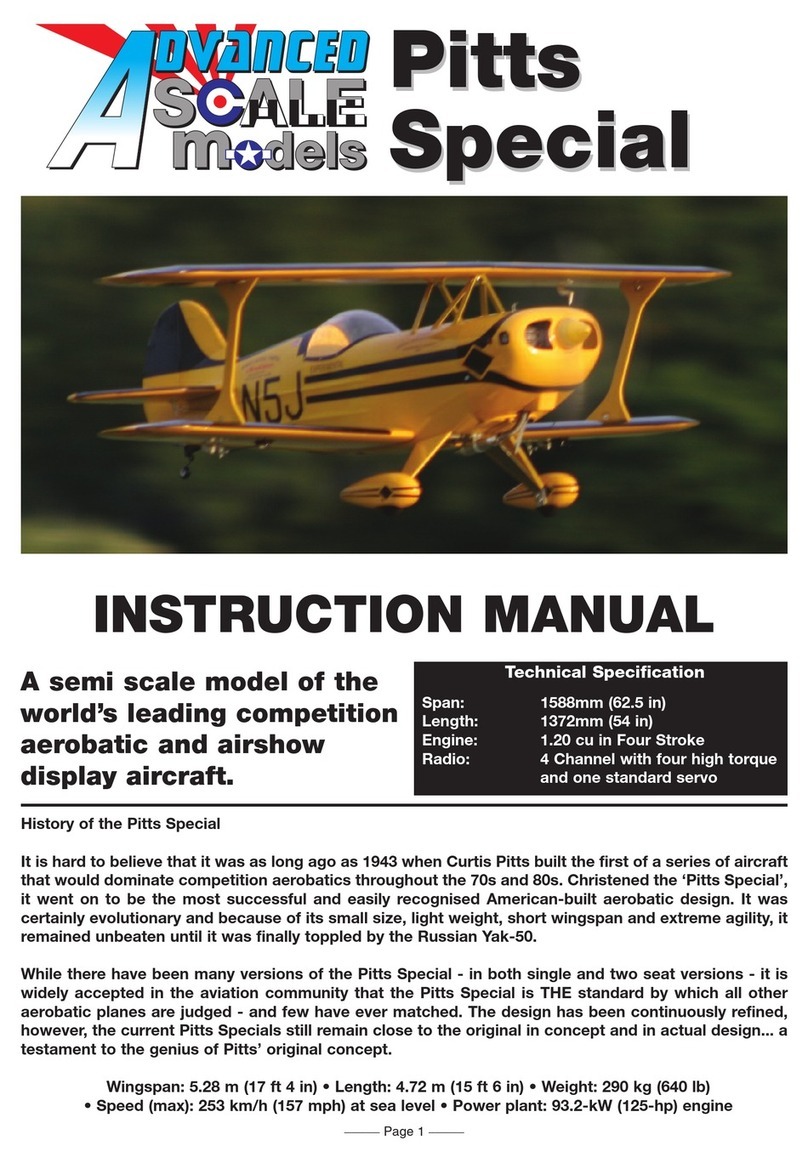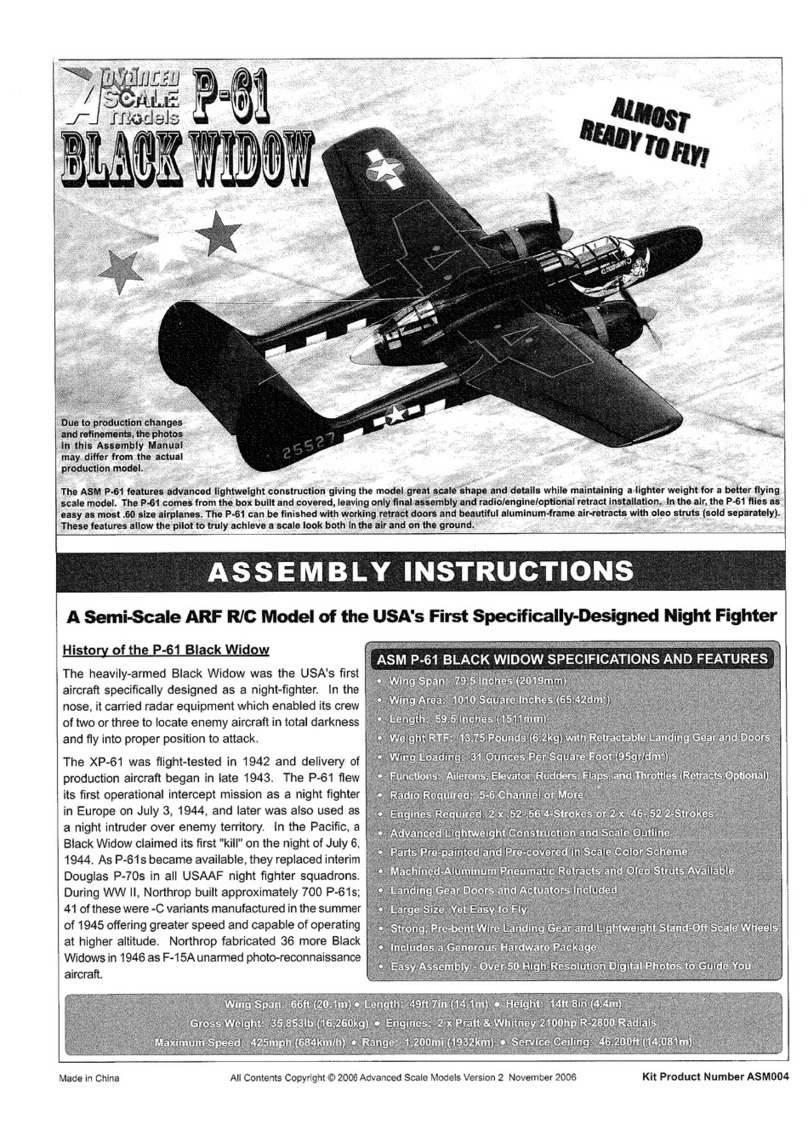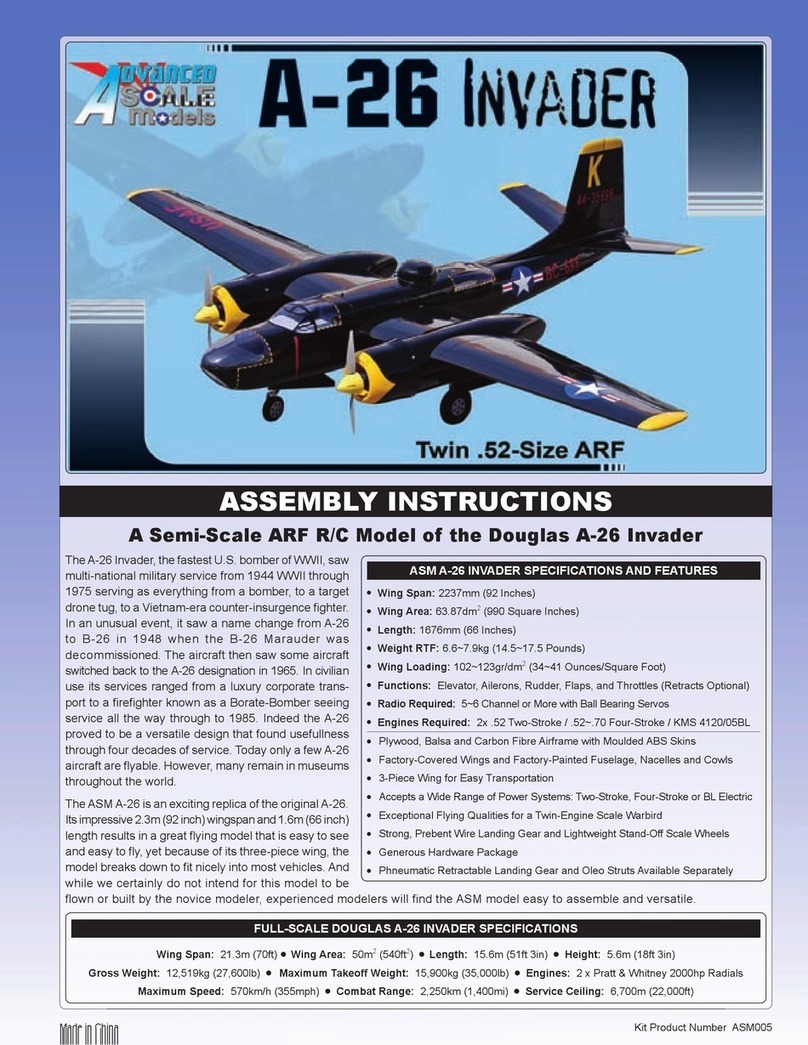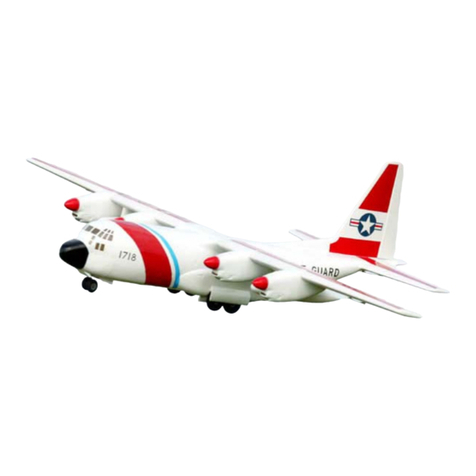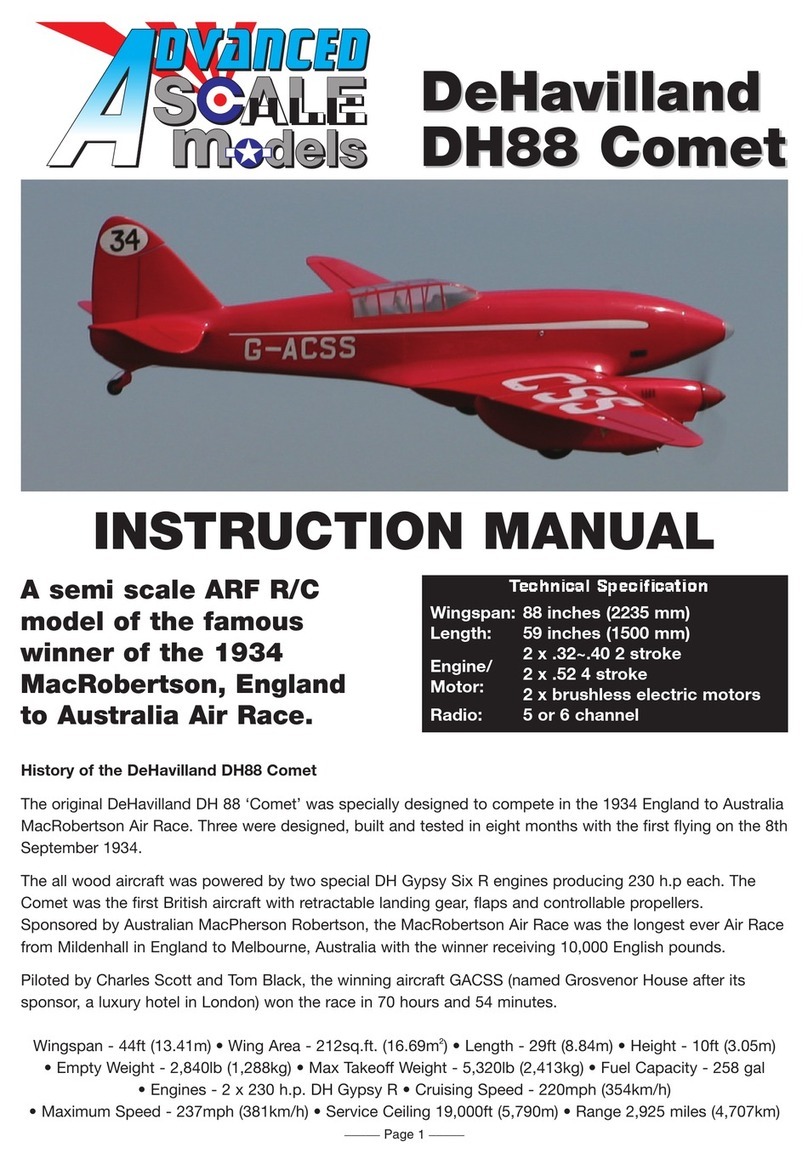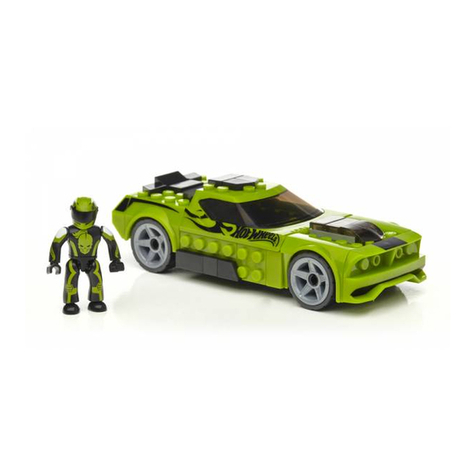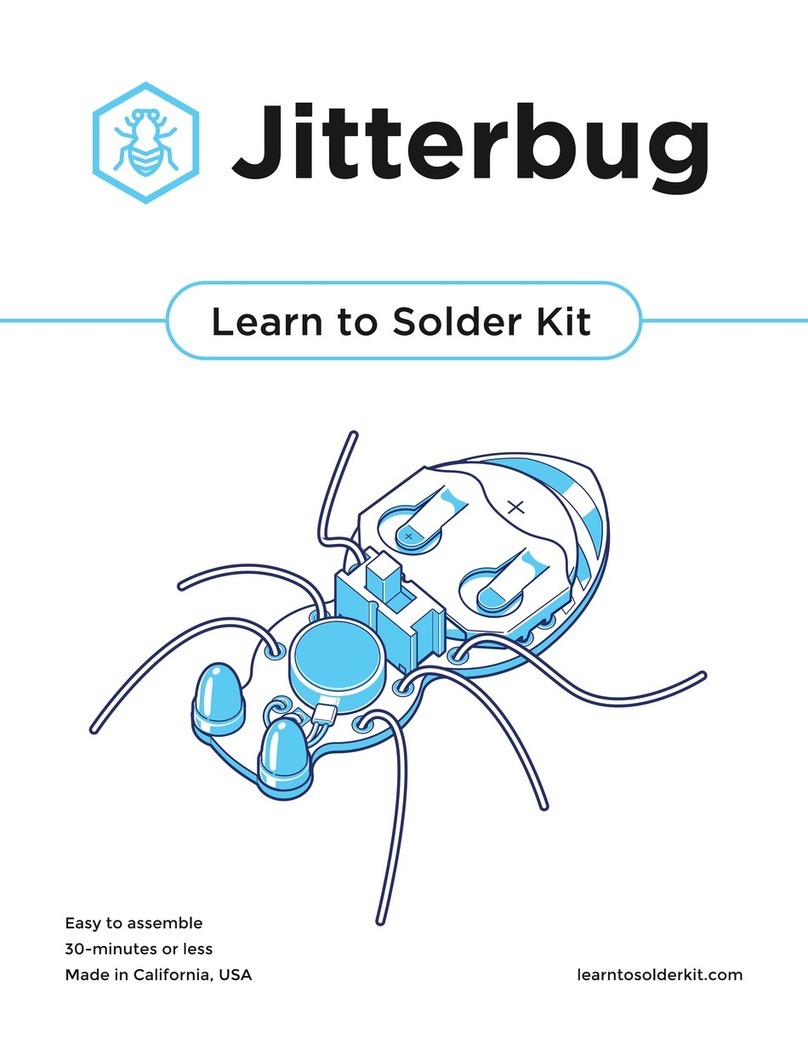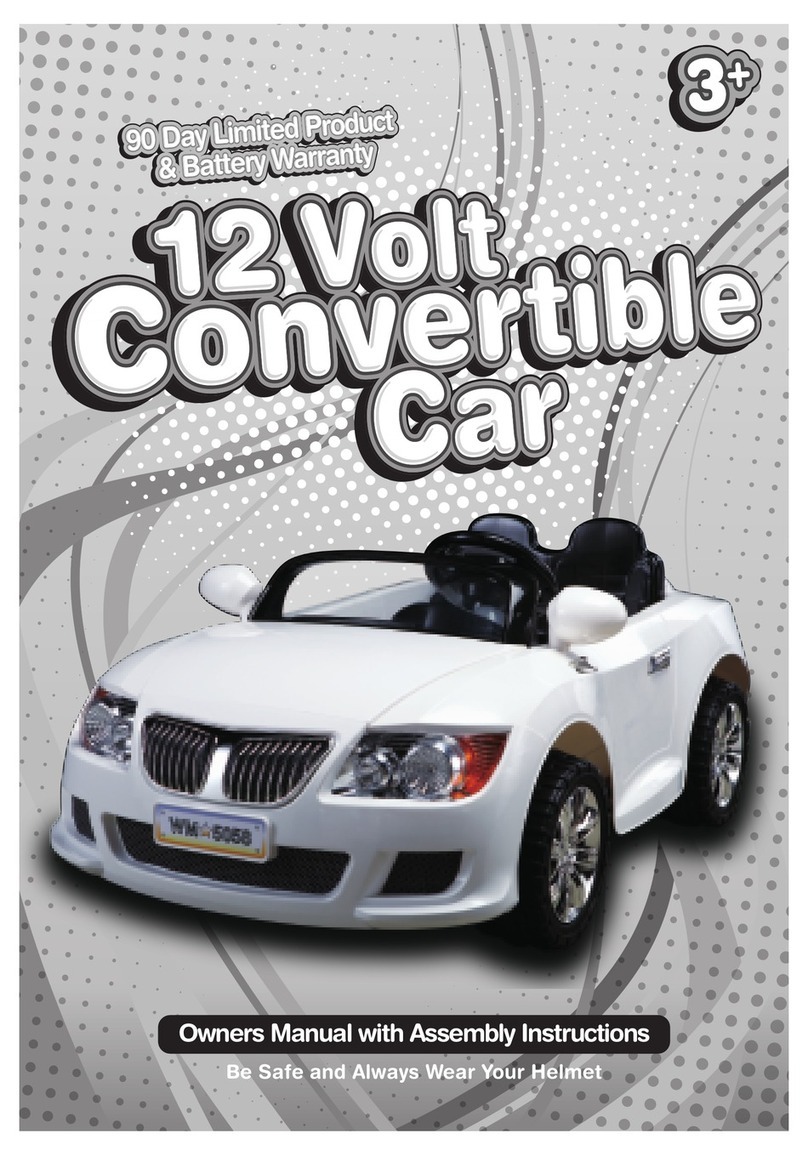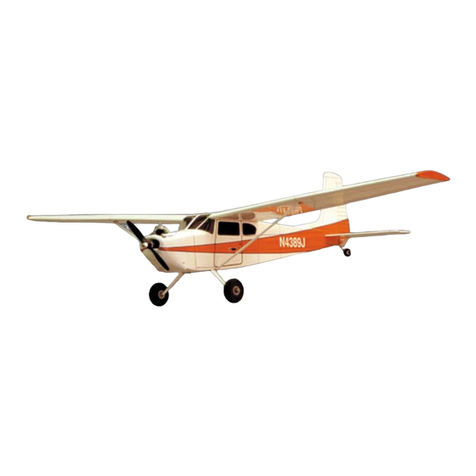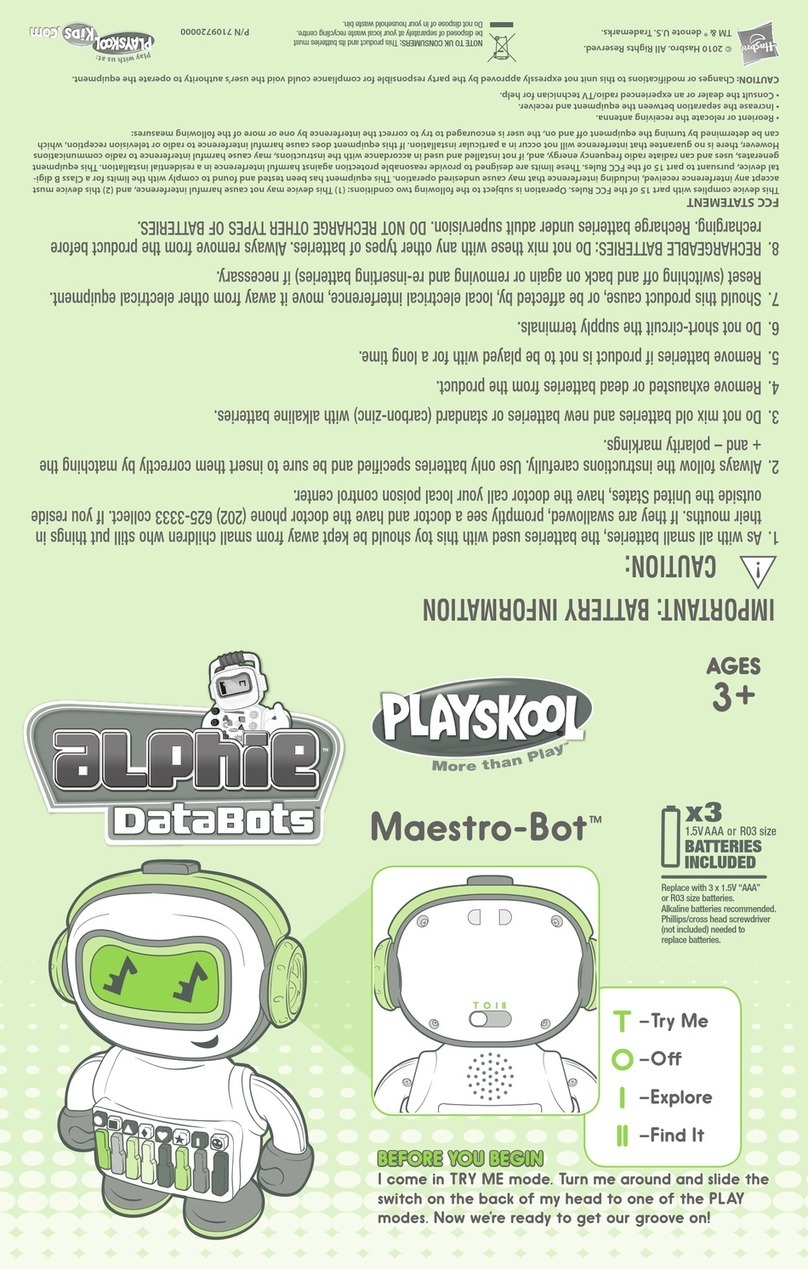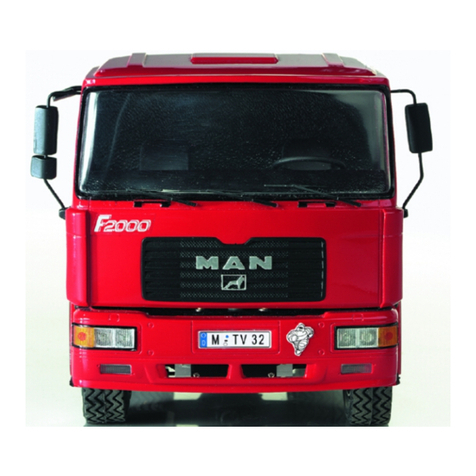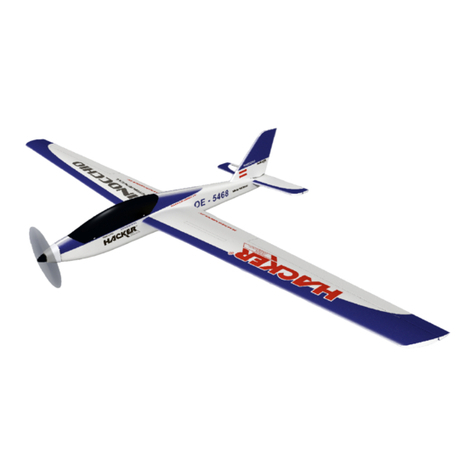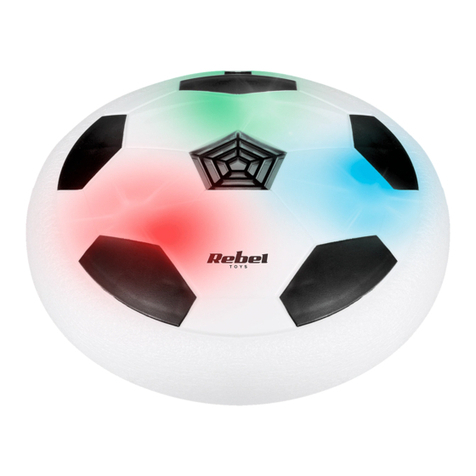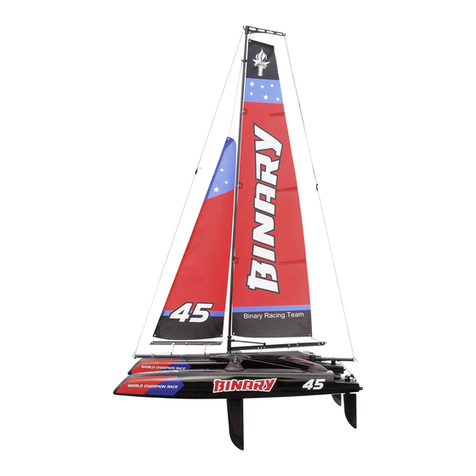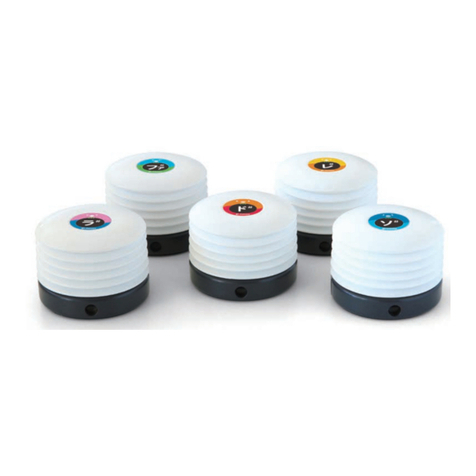
Page 20
AIRCRAFT SETUP INFORMATION
BALANCE POINT
l100MM (4") BACK FROM THE LEADING EDGE OF THE WING, MEASURED AT THE FUSELAGE SIDES.
q Turn the aircraft upside down, place your ngers on the wing at the balance point, and carefully lift the aircraft. If the nose of the
aircraft drops, the aircraft is nose heavy. To correct this, move the battery and/or receiver back far enough to bring the aircraft into
balance. If the tail of the aircraft drops, the aircraft is tail heavy. To correct this, move the battery and/or receiver forward far enough to
bring the aircraft into balance. When balanced correctly, the aircraft should sit level or slightly nose down when you lift it up with your
ngers at the C/G location.
+ Once you have own and become familiar with the ight characteristics of the aircraft, the C/G can be moved fore or aft to change
the ight performance. Moving the C/G back will cause the aircraft to be more responsive, but less stable. Moving the C/G forward will
cause the aircraft to be more stable, but less responsive.
IMPORTANT Balance the aircraft with the fuel tank empty. Depending on the engine chosen, you may need to add some weight
to balance the aircraft.
Lateral balancing will make the aircraft's controls easier to trim and will make the aircraft track straighter in the air. It is strongly
recommended.
qTurn the aircraft upside down and tie one length of string to the propeller shaft and loop a second length of string around the tail wheel.
q With someone helping you, carefully lift the aircraft up by the two pieces of string. Watch how the wing reacts. If one side of the wing
drops, that side is heavier than the other. To correct this condition, stick a small piece of self-adhesive lead weight to the bottom of the
lighter wing half (the one that doesn't drop). For best mechanical advantage, place the weight as close to the wing tip as possible, but
make sure to apply the lead weight to a solid portion of the wing structure so that it can't rip off during ight.
q Repeat the procedure a couple of more times to double-check your ndings. When done properly the wing should stay level when
you lift the aircraft.
LATERAL BALANCING
We recommend initially setting up the aircraft using the settings listed below. These settings are suggested for initial test ying because
they will allow the aircraft to y smoother and make it easier to control. Once you're familiar with the ight characteristics of the aircraft,
increase the control throws in small increments and add exponential to suit your ying style.
Ailerons: 25mm (1") Up and 25mm (1") Down
Elevator: 35mm (1-3/8") Up and 35mm (1-3/8") Down
Rudder: 75mm (3") Right and 75mm (3") Left
THE CONTROL THROWS ARE MEASURED FROM
THE WIDEST POINT OF THE CONTROL SURFACES
VERY IMPORTANTAfter you are nished adjusting the control linkage assemblies and the control throws, we strongly suggest
installing 10mm (3/8") long lengths of silicone fuel tubing over the clevises to prevent any chance of them opening during ight.
CONTROL THROWS AND EXPONENTIAL
Expo, as it's more commonly referred to, softens the control feel around neutral. This is especially helpful when ying an aircraft that
uses a lot of control throw. Softening the neutral point makes the aircraft y more smoothly and makes it more likely that you won't
over-control. Please note that different brands of radio control systems may call for + or - Expo. Please check your transmitter's owners
manual for more info.
Ailerons ........................................ 30%
Elevator ........................................ 20%
Rudder.......................................... 40%
TEST FLYING
Ailerons: 35mm (1-3/8") Up and 35mm (1-3/8") Down
Elevator: 45mm (1-3/4") Up and 45mm (1-3/4") Down
Rudder: 75mm (3") Right and 75mm (3") Left
AEROBATIC FLYING EXPONENTIAL
PRO TIP The C/G location listed above works well for initial test-ying, but does result in needing about 20% of down elevator to
hold level inverted ight. The C/G can be moved back approximately 5mm~10mm (3/16"~3/8") more to improve level inverted ight
and aerobatic capability.




















